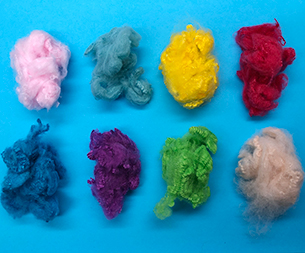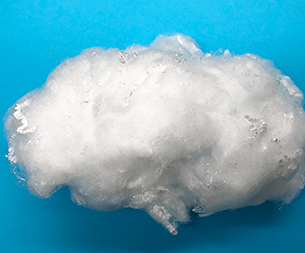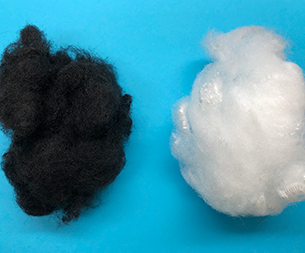Regional Comprehensive Economic Partnership Agreements (RCEP) will take effect on January 1, 2022. The 15 Member States of RCEP include ASEAN Trinity, as well as China, Japan, South Korea, Australia, New Zealand, its total population, economic volume, and total trade accounts for about 30% of the world. Therefore, RCEP is also known as "the world's largest trade zone."
After the RCEP takes effect, Chinese companies will be able to import advanced technology, important equipment, key components, daily consumer goods, and import design R & D, energy-saving and environmental protection, and better meet the domestic market consumption upgrade needs. . And through RCEP, China and Japan first reached a bilateral tariff displacement arrangement, China's zero-tariff commodity proportion imported from Japan will expand from 8% to 86%, which benefits many industries in textile.
In addition, the RCEP takes effect, it means that 91% of the product tariffs will be gradually canceled, and the decline in non-tariff barriers, the establishment of the service, and the establishment of the investment and the establishment of the investment, the convenience of trade investment will be greatly improved. The protocol takes effect on the promotion of free trade, stabilizing the industrial chain supply chain, and promoting China's high level of opening up, and is of great significance. This will undoubtedly have a huge impact on the export business in the textile industry.
Recently, the customs issues guiding interpretation of RCEP key origin rules, some of which involve the focus of textile industry is worthy of attention.
1. Cumulative rules "Accumulation" is an important supplementation rule, refers to the parties of other Parties used in the product production as product production when determining the native qualifications of the product. Original materials, the freedom area as a whole, promoting the freedom of trade in the region. The accumulation rules essentially reduce the threshold for the qualgeration of the product, with the "softener" effect, which helps to encourage manufacturers to produce production resource allocation in various parties, and strengthen the coordination of upstream industries, which in turn is conducive to the area The Development of Industrial Economy and Industrial Trade.
2. Minor content rules
The micro content rules are also known as "tolerance rules". According to Article 7 of the Agreement, if a part of the non-primary materials used in production is not satisfied with tax changes, as long as the value of this non-native material is more than 10 %, Then goods still get native qualifications.
The micro content under the RCEP can be applied to all the goods in Chapter 1 to 97, that is, the value of non-native materials that can be used for goods production and the resulting decimation of the taxation is not exceeding the goods FOB price. 10%; the micro content of the goods (textile raw materials and textile products) of 50 or 63 can also be measured by weight, ie, the weight of the non-nature of the non-normally changed material is not exceeding the total weight of the cargo. 10%.
3. Enterprise origin independent statement
According to Article 16 of the Agreement, the RCEP will allow the origin certificate issued by the visa body to approve the origin statement issued by the approved exporter, as well as the origin of the exporter or manufacturer.
This marks that my country's origin proven system will gradually change from the model of the origin certificate as the main origin to the authorized agency to issue the origin of the origin certificate and the company's autonomous release of the origin statement in parallel. Introducing and vigorously implementing the autonomous statement of origin is one of the important features of the high level of free trade agreement, which greatly saves the government's administrative cost and business cost of the company, and further improve the customs clearance of goods.
In addition, according to the RCEP Agreement, in the next 10 years, my country will also introduce the entry threshold, any exporter or producer can issue the model of the origin statement. This model will exempt from export enterprises to apply for goods origin or apply to customs to relevant procedures for approved exporters, and further improve international trade logistics efficiency, reduce corporate operation costs, and have important significance for my country's export enterprises to improve international competitiveness.
4. Back to the back of origin certificate concept
Article 19 of the Agreement stipulates the issuance requirements and verification of the proof of back to the origin. The back to the back of origin has proved that the goods still maintain the original qualification certificate in the process of not exceeding this section, the essence is the endorsement of the origin certificate or statement.
The RCEP back to the original origin has proved that the intermediate Parties have issued goods certified by the original export Parties, and the origin of the original origin has been proved in batches, and the relevant goods can still enjoy tariff benefits when importing other Parties. Earth improves the flexibility in the sales strategy and logistics arrangements.
In addition, Customs Suggestions: The rules of origin under the RCEP Agreement presents complexity and diversity, providing more possibilities and options for the majority of operators to optimize the supply chain layout in Asia-Pacific and even global. It is recommended that enterprises have strengthened the study of RCEP origin rules, according to their own products, industrial chains, early production and logistics arrangements, establish a cross-country development concept, optimize the industrial layout, enhance the management efficiency of enterprises, and use the free trade agreement discount.
In the future, RCEP will promote significant growth in regional trade investment, bringing booming opportunities. After the agreement entered into force, more than 90% of the goods traders between the approved members will eventually achieve zero tariffs, and mainly reducing taxes from zero and 10 years, which means that countries will exchange goods trade in a short time. Liberalization promises. With the rules of origin, customs procedures, inspection and quarantine, technical standards and other goods rules, tariff cuts and cancellation of non-tariff barriers will have superimposed effects, significantly enhanced trade relations between members. The open level of the service trade, the open level under the RCEP is significantly higher than the respective "10 + 1" agreements, covering financial, telecommunications, transportation, tourism, education, etc. List, further enhance the opening level. Investment areas, members have made high-quality commitments to non-service industry investments, and have new restrictions outside of the list, and strengthen investment protection levels, which are conducive to the expansion investment in various countries in the region, and also beneficial to Chinese companies. "go out".
- Key Guide to Selecting Polypropy
- The impact of the Federal Reserv
- The core performance advantages
- China Textile Machinery: Driven
- The core applications of polypro
- Textile foreign trade has shifte
- How to choose the right polyprop
- Cross-border textile merchants a
- Optimization of Production proce
- What impact does the United Stat
- Markets
- Automotive Products
- Nonwoven Lining
- Geosynthetics
- Liquid Filtration
- Apparel and Textiles
- Hygiene Products
- Building and Construction
- Other Markets
- Contact Us
- Contact Haibang





